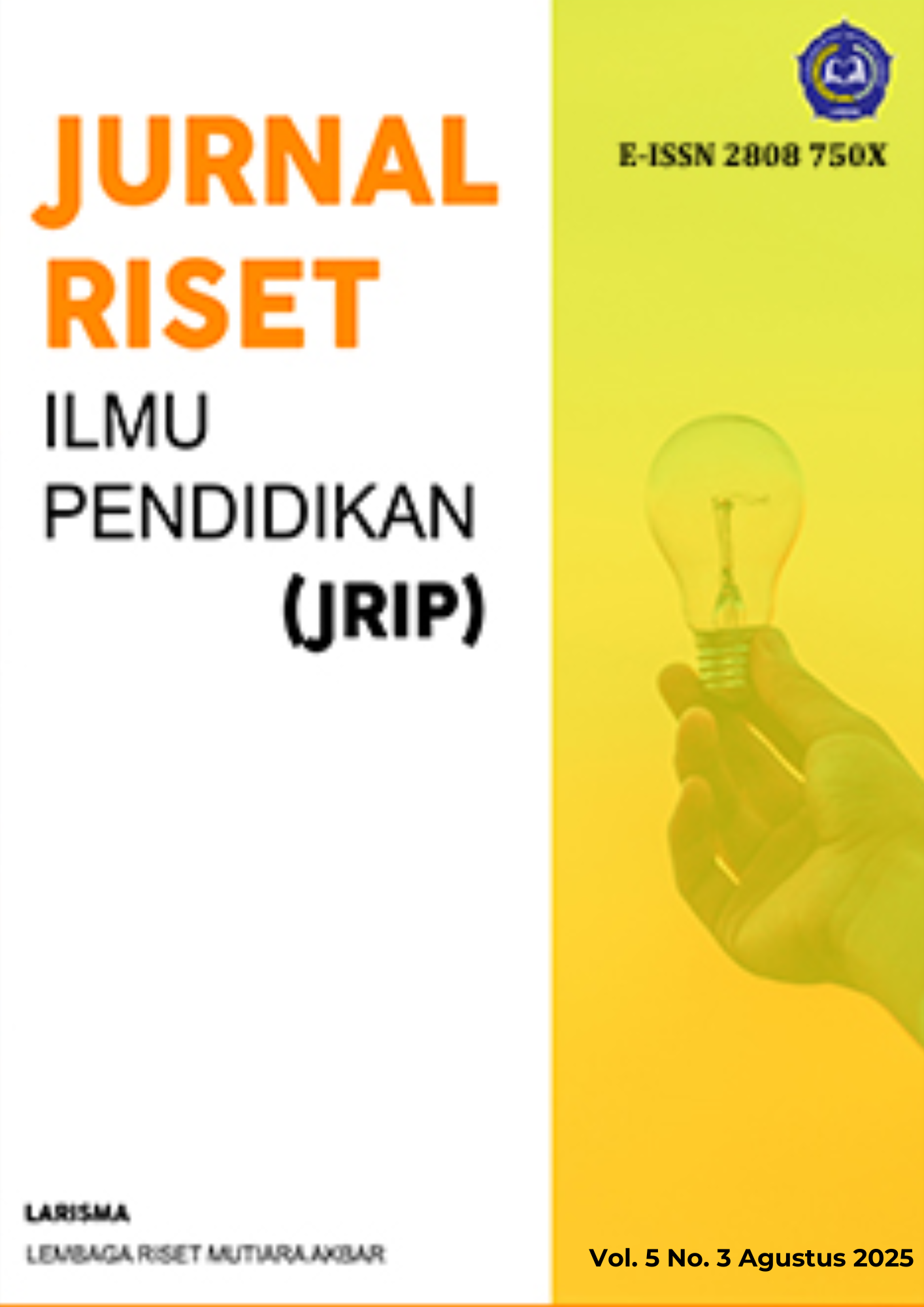Improving Children's Fine Motor Skills Through Paper Quilling Activities at TK S IT Cendekia Takengon
Main Article Content
Abstract
Fine motor skills are an important aspect in early childhood development that needs to be optimally stimulated. This study aims to improve children's fine motor skills through paper quilling activities at the IT Cendekia Takengon Private Kindergarten. The study used a Classroom Action Research (CAR) approach with two cycles, each consisting of planning, implementation, observation, and reflection. The subjects of the study were 20 children, consisting of 10 boys and 10 girls. Data collection techniques were carried out through observation and documentation, while data analysis used percentage formulas and qualitative descriptions. The results of the study showed a significant increase in children's fine motor skills. In the pre-action, the percentage of achievement was only 45%. After the intervention in cycle I, it increased to 64%, and in cycle II it reached 83%. This increase reflects that paper quilling activities are effective in training hand-eye coordination, paper rolling, cutting, and sticking skills, as well as children's ability to express creativity through artwork. Thus, paper quilling activities can be used as an alternative learning strategy to develop fine motor skills in early childhood in a fun and meaningful way.
Article Details

This work is licensed under a Creative Commons Attribution-ShareAlike 4.0 International License.
References
Agelisca, A. H., Kasmiati, K., & Utami, W. S. (2023). Pengaruh bermain paper quilling terhadap kemampuan motorik halus anak kelompok B2 di TK Yunico Kota Jambi. Innovative: Journal of Social Science Research, 3(4).
Amrullah, Z. A., & Ahmad. (2018). Penelitian tindakan kelas: Teori dan aplikasi. Penerbit ANDI.
Ariyanti, T. (2016). Pentingnya pendidikan anak usia dini bagi tumbuh kembang anak. Jurnal Ilmiah Pendidikan Dasar, 8(1).
Barnawi, & Wiyani, N. A. (2017). Format PAUD. AR-Ruzz Media.
Hamzah, A. (2019). PTK tematik integratif: Kajian teori dan praktik. Literasi Nusantara Abadi.
Idris, N. R. (2022). Pengaruh permainan paper quilling terhadap kemampuan motorik halus anak usia 4–5 tahun. Jurnal Pendidikan Anak, 8(2).
Khasanah, I. (2014). Upaya peningkatan keterampilan motorik halus melalui paper quilling pada anak kelompok B4 di TK Masyitoh Dukuh, Imogiri, Bantul [Skripsi, Universitas Negeri Yogyakarta].
Muslich, M. (2009). Melaksanakan PTK itu mudah. Bumi Aksara.
Nilamsari, R. (2023). Implementasi metode paper quilling untuk memaksimalkan perkembangan motorik halus pada anak di KB Biwara Pelita Desa Gondang Kecamatan Taman Kabupaten Pemalang [Skripsi, Universitas Islam Negeri K. H. Abdurrahman Wahid Pekalongan].
Rohmatin, I., & Hasibuan, R. (2022). Peningkatan motorik halus melalui kegiatan paper quilling pada anak kelompok B3 di TK Darul Falah Cukir Diwek Jombang. Jurnal PAUD Teratai, 6(3).
Sukamti, E. R. (2018). Perkembangan motorik. UNY Press.
Suryana, D. (2011). Stimulasi dan aspek perkembangan anak. Prenadamedia Group.
Susanto, A. (2011). Perkembangan anak usia dini. Kencana Prenada Media.
Usman, M. U. (2010). Menjadi guru profesional. Remaja Rosdakarya.
Wahyuningtyas, D. (2020). Penerapan kegiatan paper quilling untuk melatih kemampuan motorik halus anak usia 5–6 tahun. Jurnal Pendidikan Anak Usia Dini, 2(1).

